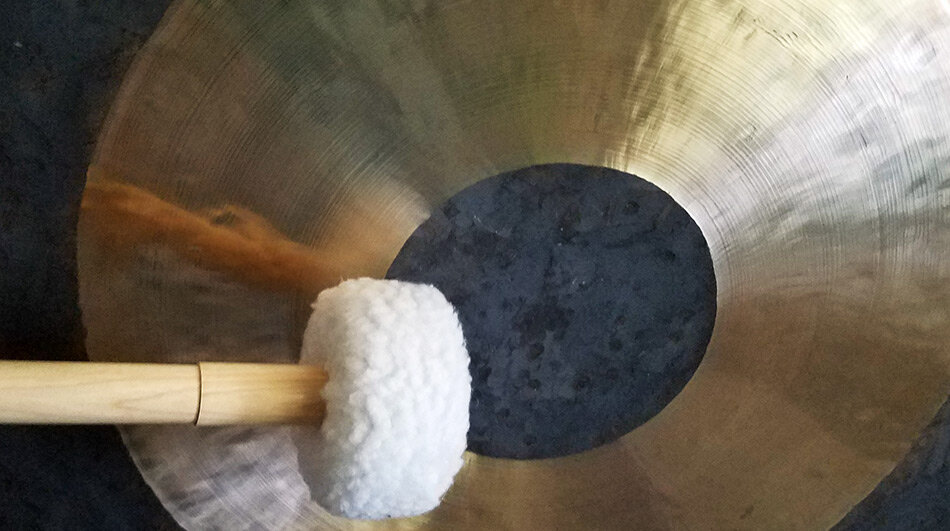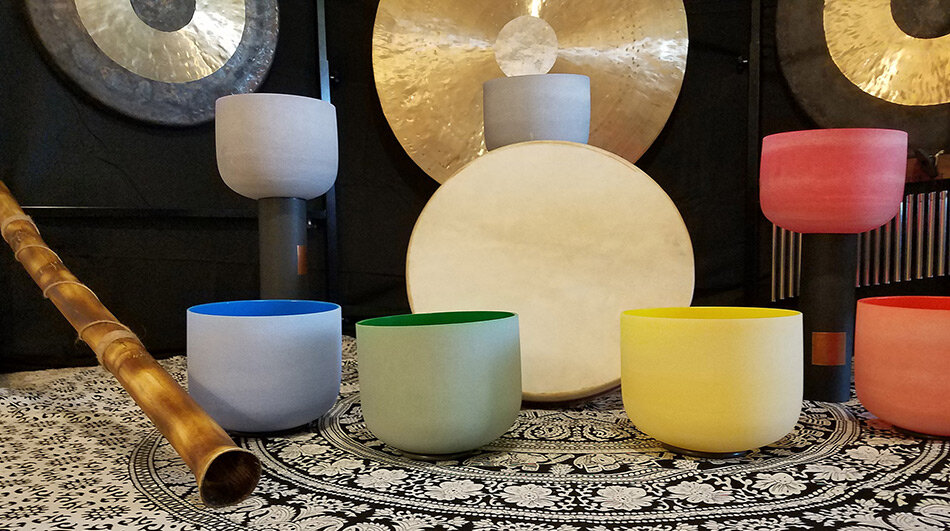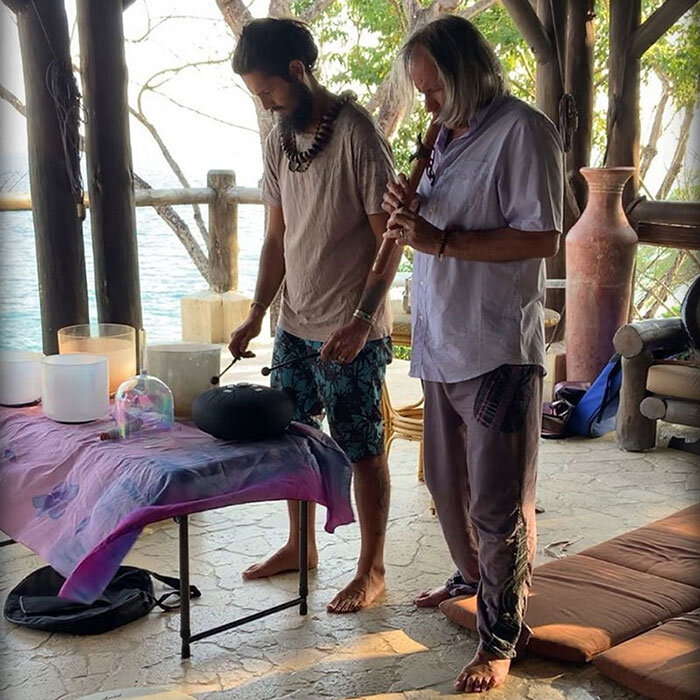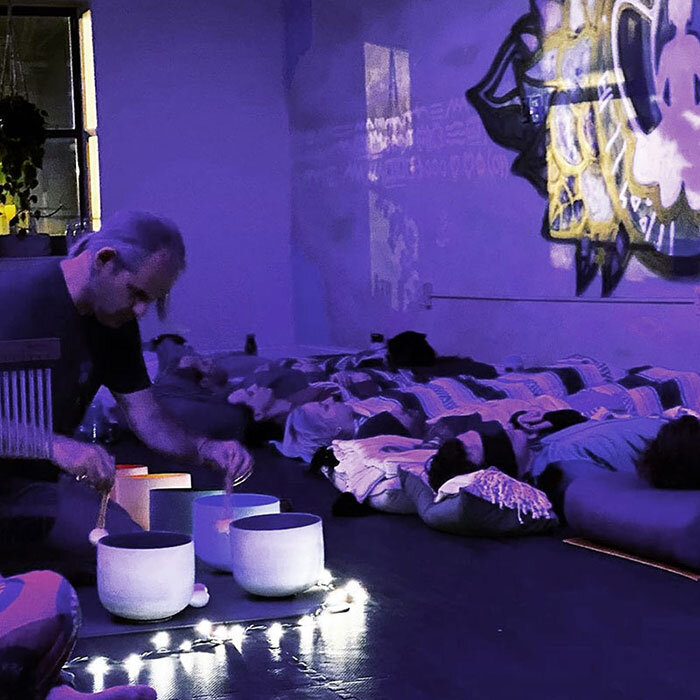Weekend Design & Wellness Project
Om My Gong
A Harmonious blend of pranayama breathing and sound meditation healing
Yogini Kim and gong practitioner Michael O bring together these two calming practices taking the mind and body into a realm of healing and clarity.
Our world is full of stress, anxiety and negative vibrations, take time for yourself and clear the chatter. You and only you can begin this journey to a clear and uncluttered mind.
“If you want to find the secrets of the universe, think in terms of energy, frequency and vibration.”
Music is a perfect example of how design/art and wellness come together. Instruments reach frequencies that tap into the human body on a cellular level. A balanced and healthy body resonates from 62-72MHz. DisEase begins when the frequency of the body is 60MHz and below. At lower frequencies the immune system is compromised and body becomes susceptible to a variety of DisEases. The gong is a powerful instrument that raises the frequency of the whole body and aids in healing cells vibrating at lower frequencies.
Here is your Weekend Design & Wellness Mission should you choose to accept it (accept it, you’ll love it)… take some time to explore the powerful and invigorating effects of meditative gong sessions created by Kim and Michael O.
Visit Om My Gong for insights on breathing, yoga, chakras and go on a sound journey on their YouTube channel. Be sure to share this with friends and family that need to take a bit of time to reset and recharge their mental state.










